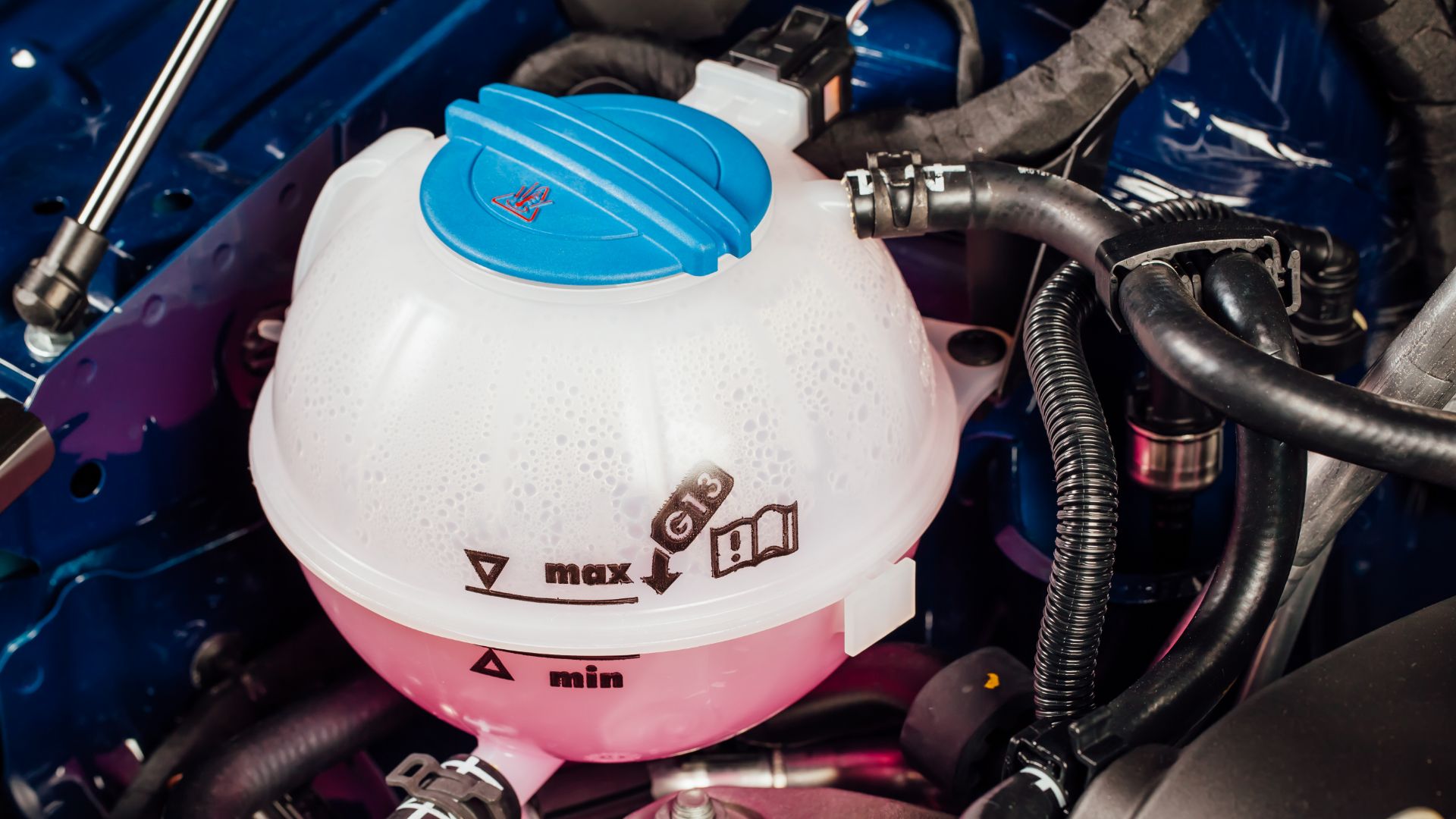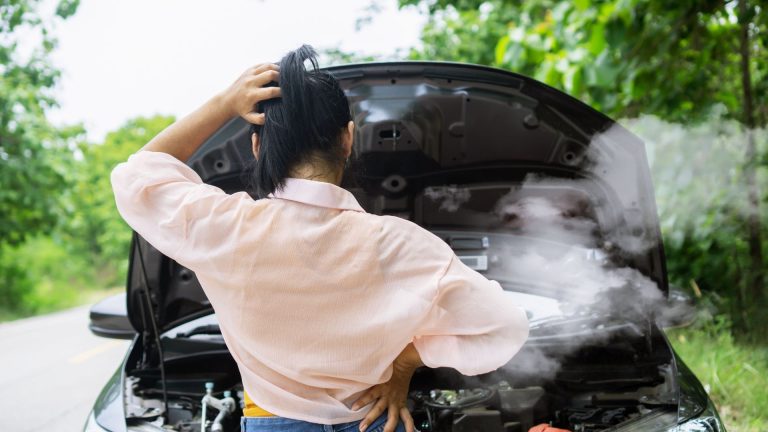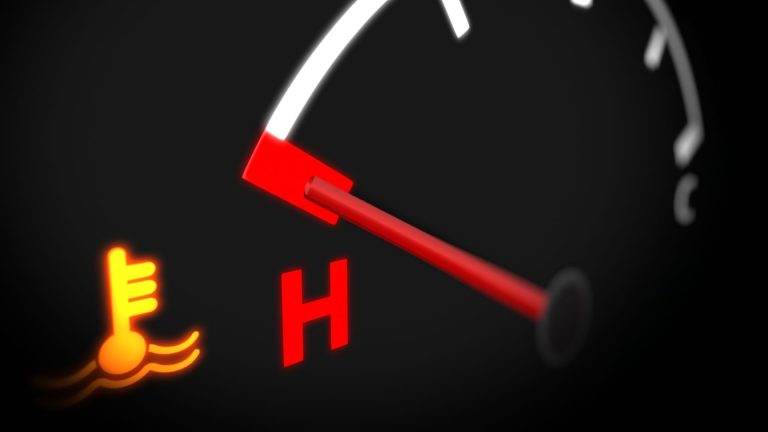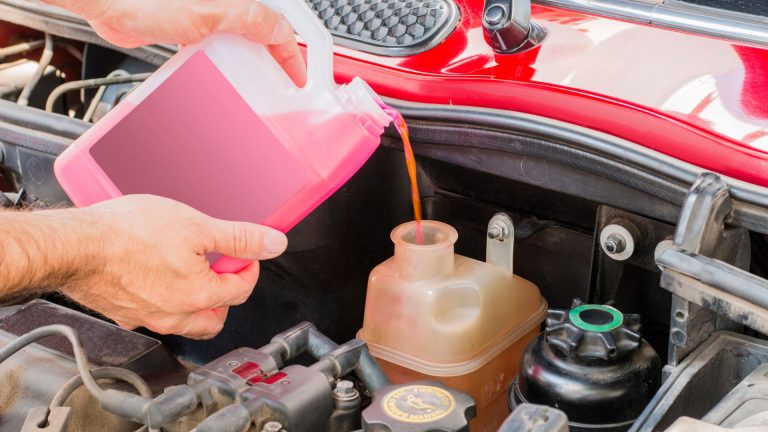Symptoms of low coolant — causes and fixes
Discover the warning signs of low coolant and prevent engine damage.

Every car requires coolant, and a sign on the dashboard usually warns drivers of low coolant levels. The function of coolant is to transport heat and guard against freezing or boiling, which can damage engines. Coolant plays a crucial role in maintaining the engine’s moving parts.
Low coolant can sometimes cause a head gasket on your engine block to blow. If this happens, you may notice smoke from the engine or tailpipe, a loss of power, engine knocking sounds, or decreased efficiency.
Heat can only be efficiently transported when a liquid is present in the system. Due to this, maintaining the proper coolant temperature is crucial to avoid freezing or evaporating in hot weather. This article will look at symptoms of low coolant, its effect, causes, and how to fix this problem.
Effects of low coolant in a car

Driving with low coolant can damage certain parts of your vehicle, which could require major repairs. Here are some things that can happen if you drive with low coolant.
Overheating
Coolant helps in removing heat from the engine. Low coolant levels could cause the engine to overheat or stop working. Continuous operation of an overheated engine may result in permanent damage.
The engine cuts off automatically
When the engine stops, this is meant to prevent more damage if your engine overheats from a lack of coolant. When this occurs, until your engine has cooled off, you won’t be able to drive.
Damaged engine parts
If your car doesn’t have a cut-off feature and you keep driving, your engine could suffer severe damage. This could cost you lots of money.
Blown head gasket
Low coolant can occasionally trigger a blown head gasket on your engine block. If this occurs, you might observe smoke coming from the engine or exhaust, a reduction of power, engine banging noises, or lower efficiency.
Symptoms of low coolant

When your coolant gets low, some glaring symptoms come up and cannot be overlooked. The most common of these symptoms are mentioned below.
The heating system fails
When you observe that the heater isn’t functioning as it should, your automobile is likely low on coolant. The same coolant that hydrates the engine is used by the heater. Your heater operates because of this hot coolant.
If your heater isn’t producing warm air, your car’s coolant levels are either very low or unavailable.
The AC system begins malfunctioning
When you turn on the heat in your car, the coolant helps control how much hot air enters the cabin.
You can notice hot air escaping from your car’s AC vents if the coolant level is low and the air conditioner is functioning.
A pleasant smell is present
When it has a coolant leak, you might detect a sweet smell in your car’s air conditioner or under the hood. This is so that antifreeze can adjust water’s freezing and boiling points. Antifreeze contains glycol, a sweet, sticky liquid.
Strange smells may warn of automotive problems, but they are not necessarily an obvious sign. If your coolant level is low, it’s important to seek the assistance of a qualified auto professional.
The temperature line turns red
The needle on the gauge will rise to the letter “H” when there is insufficient coolant, which prevents your engine from cooling and causes it to overheat.
Shut off your engine and check the coolant whenever your gauge’s needle isn’t close to the center.
High fuel consumption
Low coolant levels may cause your car’s decreased acceleration or higher-than-normal fuel usage.
The engine needs coolant to function properly; therefore, if your fuel burns more quickly, your coolant isn’t getting to the engine as it should.
What does the coolant signal on my dashboard mean?
The dashboard warning light is one of the fastest things to observe a low coolant. When coolant is low, your vehicle may notify you on its dashboard. However, not all cars are equipped with this feature.
The best action to take is to stop driving if the coolant indicator on your car pops up. To avoid the coolant harming your engine or causing it to overheat, pull your car over to the side of the road and turn off the engine.
Get your vehicle to a repair shop as soon as possible so they can fix any problems. Here are a few key reasons the coolant signal can appear in your car. The following are the major causes:
Your coolant is running low
You can also check if the coolant level in your reservoir is low. If this is the case, adding more coolant might be the only option.
Simply top off your coolant until it reaches the “full” level when the engine is cold or hasn’t been running. Refill the coolant to the required amount by mixing equal parts water and antifreeze.
Damaged head gasket
If your head gasket isn’t functioning correctly, your low coolant level warning light can show up. The head gasket creates a seal between the engine block, and the cylinder falls. Additionally, it enables smooth oil and coolant flow.
The coolant in your combustion chambers may burn if the head gasket fails; this is risky because you might not notice any leaks.
Faulty radiator cap
Your radiator cap, which maintains the liquid within and at the proper pressure, is a crucial component of the coolant system. The low coolant warning light on your dashboard may turn on as a result of coolant leaking from a cracked or damaged cap.
You cannot release liquids if the cap is jammed. As a result, the pressure inside the radiator increases, pushing the hose to rupture and leak.
The reservoir can overflow if the radiator cap is damaged because the coolant will discharge early.
Leaking coolant reservoir
Your first concern should be a leak if you discover that your coolant level is low; topping it up doesn’t solve the problem. Look for any holes or damaged areas on the sides or bottom of your reservoir where the coolant is spilling.
The coolant reservoir will need to be replaced by a mechanic. Depending on the brand and model of your car, as well as the mechanic’s expenses, the cost will vary.
If you can confidently work on your car for repairs, you can replace the bad cap with a new one. If you need more confidence, a mechanic can do it.
How can I top up my coolant?

The easiest solution for low coolant is to start filling it back up to the proper levels and let it soak back into the system. The level of the coolant mixture currently in your tank is indicated by signs like “max” and “min” that you can see when you open your radiator cap.
There are other procedures that one can take while topping up the coolant. They are as follows;
- Allow the vehicle to cool off. It is advisable to park your car somewhere on level ground and leave it there for a few hours without driving, so it doesn’t get hot.
- Find the coolant reservoir. This can be found in the hood. You’ll need to understand where to put antifreeze in a car if you’ve never done it before. Find the reservoir that contains the coolant; the cap should be marked with a caution phrase like “Caution” or “Hot.”
- Mix your coolant with water. If this still needs to be done, you can mix the pure coolant and distill water yourself at a 50/50 ratio with the coolant. If you don’t have filtered water, you can boil some water and add it to the mixture when it has cooled.
- Fill the radiator If the radiator has a cap, you can access, and if you can’t see any coolant in the radiator, fill it up till you see coolant at the bottom of the neck. If a vacuum is inside, the air may ascend to the surface and lower the level. Refill it and place the cap back on.
- Fill the coolant Reservoir. The coolant reservoir will be shown with min and max lines, just like the radiator. Put the cap back on after adding coolant until it reaches the whole line.
Can you top off the coolant with water?
Topping off coolant with water is usually not a good idea because regular water contains impurities that could build up in your coolant pipes. However, it is much wiser to fill off the coolant with water than to let it go too low if you do not have access to coolant for whatever reason, only in an emergency when the coolant liquid level is lower than it should.
While topping up with water will bring you safely to the closest garage and help you find any problems, it should be taken care of and not become the norm.
Our take
Always be aware of these warning signs of low coolant, and try to drive safely. However, depending on the engine, the model of the car, and the amount of work you’re asking the machine to do, you can run the engine for roughly one to five minutes if you absolutely must start it without adding coolant.
How does a car with low coolant act?
When the coolant is low, your engine will start to heat up. The feature will automatically shut off the engine to prevent damaging your engine.
What does low coolant sound like?
As a result of low coolant, if the head gasket is affected, you can notice smoke coming from the engine or tailpipe, a loss of power, machine banging sounds, or lower performance in your vehicle.